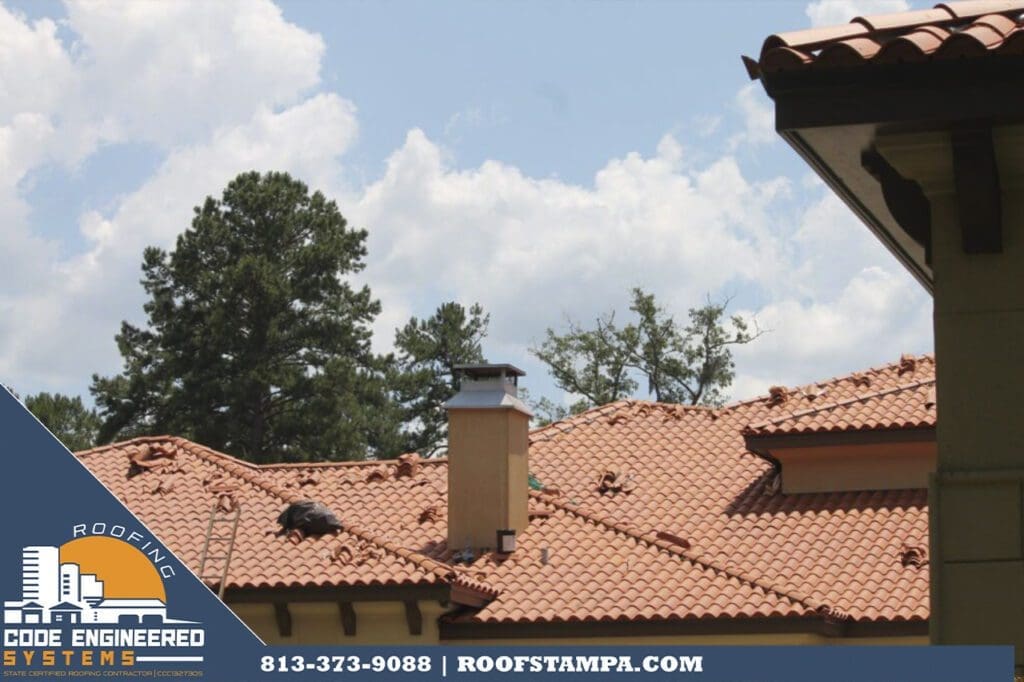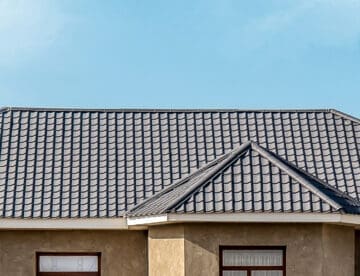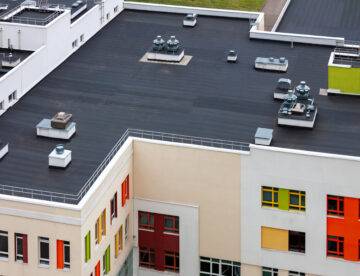If your home has an asphalt shingle roof, you’ll likely need to replace the roof at some point while you own it. The easiest way, usually, is to go with asphalt shingles. If you’re looking for potentially re-roofing for the last time with a more durable material, you can consider upgrading to clay tiles or concrete tiles. So let’s look at clay tile and concrete tile roof pros and cons.
What’s Similar for Clay and Concrete Tiles
These roofing materials are more alike than different, with both starting as a soft and formable material that can take on a variety of shapes, colors, and textures. People have used clay tiles all over the world for centuries, in climates from the baking-hot Middle East and Mediterranean to cold and snowy Northern Europe. Concrete tiles are a more recent development, but they’re still made of good old concrete: water, sand, and Portland cement. Generally, where you use one you could use the other interchangeably. The deciding factor will probably be your budget.
While both types of tiles are among the most-durable materials you can get, they’re susceptible to a couple problems. They both have more nooks and crannies for algae to grow from, especially compared to a metal roof. It can be cleaned off, but it is a maintenance need. It’s actually a good idea to have a yearly roof inspection, which could include a cleaning. It’s not a great do-it-yourself job, as these tiles can be broken or cracked if you step on the wrong spot. The surface can be slippery, as well, especially compared to an asphalt shingle roof, so anyone working on the roof should wear personal protective equipment (PPE).
Installing Clay and Concrete Tile Roofs
Over the roof decking, your contractor will install an underlayment. Asphalt-saturated roofing felt is the old-school choice, but you’ll have other choices, as well. Newer underlayment is more rubberized, so it’s a bit stretchy and sticky, helping to seal around nail holes. The system requires wooden batten to run horizontally across the roof surface, parallel to the eaves, and your contractor nails those in place. Thus, sealing around the nail holes makes for a more durable and waterproof tile roof. Next up, the crew nails the tiles, either clay or concrete, into the battens.
That’s one reason that clay and concrete tiles are such a great roofing system. The battens create an air space that separates the tile from roof deck. That air space inhibits the sun’s heat from moving into your attic space, which keeps that space up to 50% cooler than an asphalt shingle roof, according to the Oak Ridge National Laboratory. The air space is also a drainage plane, so any moisture that gets past the tiles will naturally flow down to the bottom row of tiles and drain out. That’s gravity in action!
What About the Weight of Clay and Concrete Tiles?
If your home already has a tile roof, you’re almost certainly fine to use either type. However, if you’re switching from an asphalt shingle roof or a metal roof, you may need to have your contractor upgrade the roof framing to handle a lot more weight. As in, more than double the weight! However, that is necessary more often in older stick-framed homes with hand-framed rafters. Almost all modern homes of the last few decades use engineered roof trusses that will handle the increased weight of a tile roof.
An asphalt shingle roof with basic three-tab shingles will typically weigh 200-250 lbs per square. A square is 100 square feet, and that’s how roofing is done for estimating. Architectural shingles, with more laminations for that thicker appearance, will typically weigh 400-420 lbs per square. A concrete tile roof can weight from 600-1100 lbs per square. And a clay tile roof is most variable, weighing from 600-1500 lbs per square. Here’s a handy chart, if you’re interested.
Pros and Cons of Concrete Tiles
Let’s start with the pros. Concrete tiles offer numerous advantages over other roof types. Compared to asphalt shingle roofing, a concrete tile roof may last roughly three times as long. Apart from storm damage, which can damage any roof type, a concrete tile roof can last 50 years. This could be the last roof you put on your home.

While heavy-duty architectural shingles have improved massively in recent years, concrete is simply a tougher, more durable material. The weight is an advantage in resisting high winds, and the solidity of the material makes it highly impact resistant. So when an intense hailstorm comes through, a concrete tile roof will handle it as well as anything.
Concrete tiles are also available in more colors and finishes than clay tiles. Concrete tiles use a pigment in the mix, bumping the number of color choices. You’ll find a few different profiles, as well, including an “S” shape that mimics historic clay tiles, as well as flat tiles that mimic wood shakes or slate tiles.
Finally for the pros for concrete tile, you won’t pay as much for concrete tiles. Clay tiles, in fact, will typically cost 20-50% more than concrete tiles.
To get a rough estimate of the cost to replace your roof, check out this handy calculator.
Cons for concrete tiles are quite minor. Over their 50+year lifespan, the color will probably fade some from the sun and weather conditions. This doesn’t affect the performance of the tiles, and it will happen gradually and won’t be very noticeable. Concrete tiles can also exhibit what’s called “efflorescence,” which happens to all concrete products. This phenomenon happens when the salts in concrete migrate to the surface and form sort of a hazy layer. In Florida, we usually find that the rain washes it away easily.
Lastly, concrete absorbs more moisture than clay, making it easier for algae and lichens to grow. The best solution to that is a good cleaning every year or two.
Pros and Cons of Clay Tiles
Pros for clay tiles are similar, with an even longer lifespan. If you clean your roof when necessary, and repair any storm damage promptly, you could have a 100-year roof! Yes, it sounds unlikely but 100+ year-old roofs exist all over the warm areas of the world. Clay tiles, like clay pots found in archeological sites worldwide, don’t wear out. They don’t rot, they don’t rust or corrode, they just continue. The real danger, as with any roof type, is major storm damage. All we can do about that eventuality is to choose solid materials and make repairs quickly.

Cons, as we’ve said, are the high upfront cost. When you consider the cost of one roof replacement over 50+ years to asphalt shingles, which might require 2-3 replacements, that high cost looks very different. The highest-quality materials simply last longer.
Check out this handy calculator for more information.
Pros and Cons Summary
For the most part, you can see that these materials are both extremely durable, attractive, and high quality. Depending on the locale and the circumstances, a clay tile roof could last twice as long as a concrete tile roof. That’s amazing. And it costs more. It has to fit your budget as well as your preferences.
Proper Installation is Crucial for Clay and Concrete Tiles
Tile roofs require a slightly different installation process compared to asphalt shingles, so you need a competent installer. Your best bet is to make sure the contractor is certified by the tile manufacturer. In fact, your new tile roof will have its own guarantee for “XX” years, while the installation is a separate warranty. If the contractor deviates from standard installation procedure, the manufacturer can declare the warranty on the tile void. Not good.
We’re Here When You Need Us
If you’d like to talk about replacing your roof, give us a call at 813-373-9088. Our team has more than 40 years of experience in roofing. You can also use this form and ask about the pros and cons of clay and concrete tiles and we will contact you.




